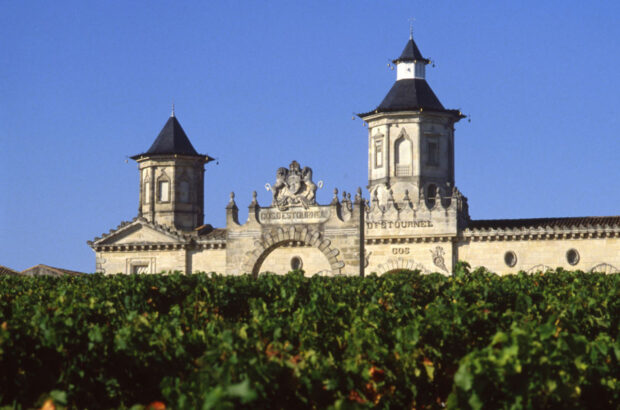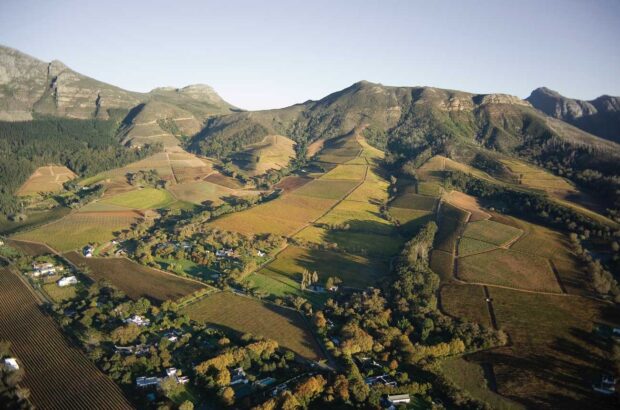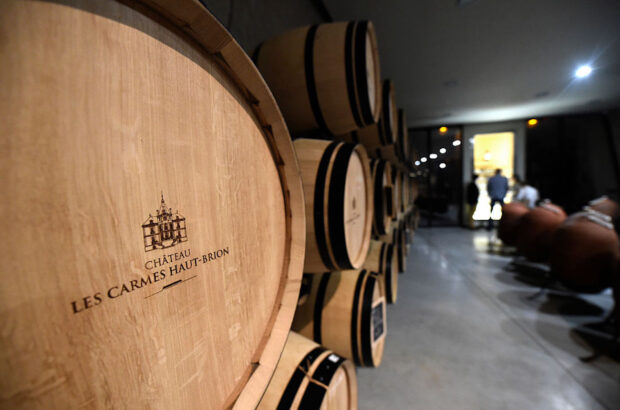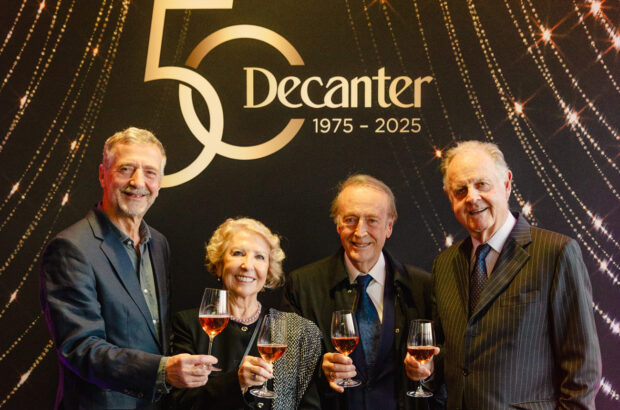‘The reason we chose to celebrate the fifth anniversary of the Harvard Data Science Review with a wine theme is that from my perspective, wine is extremely difficult to study from a scientific point of view because there are a tremendous amount of variations,’ said Xiao-li Meng, an avid wine lover and Harvard professor and founding editor-in-chief for the Harvard Data Science Review (HDSR).
‘Making wine involves science, technology, art, history and culture,’ added Meng.
The Harvard event was the brainchild of Meng and Don St Pierre of analytics firm AdaptEdge.

Harvard’s Xiao-li Meng at Vine to Mind. Credit: Tony Rinaldo Photography
HDSR is a highly regarded academic journal. Its mission is ‘to publish content that helps define and shape data science as a scientifically rigorous and globally impactful multidisciplinary field based on the principled and purposed production, processing, parsing, and analysis of data’.
This occasion saw luminaries in the wine world join top academics in data science, artificial intelligence (AI) and economics from America, Asia, Europe and Australia to tackle the challenges the world of wine is facing.
‘I wanted to get the wine industry together with data scientists and scholars to learn how data science can help the wine industry adapt to new climates, consumers and challenges. As a statistician and data scientist, I’m interested in problem-solving and learning new methodologies that may be completely unique to wine,’ said Meng.
Climate data and the future of wine
While data can’t solve the wine world’s climate change problems, it can help winegrowers and winemakers adapt more fluidly to rapidly changing environments.
Elizabeth Wolkovich, from the University of British Columbia, presented some fairly astonishing climate data in her presentation: The Problem of Terroir in the Anthropocene. Wolkovich argued that the notion of terroir is a combination of conditions, regional customs and culture, as well as environmental elements of soil, climate and regional biodiversity.

Saskia de Rothschild at Vine to Mind. Credit: Tony Rinaldo Photography.
Wolkovich’s assertion is that terroir is fluid and shifting. ‘Some things haven’t changed over the several millennia of human winemaking; the soils and geography have remained relatively steady over those thousands of years, but the climate has changed radically in the last 40 years.’
‘That means this concept, which was focused on a static idea, has changed. In the last 40 years, the terroir of Bordeaux is not the same terroir that it was, and it will be a completely different terroir in the next 20 years.’
Wolkovich showed climate data from the last 40 years, comparing classic regions with those on the US West Coast: ‘Europe has warmed in its summer growing season temperatures almost a full 20% in the last 4o years, which creates a dramatic change in the terroir.’
The Europeans are also leading the way with variety, diversity, and adaptations, according to Wolkovich.
Wolkovich’s conclusion was that variety adaptation and diversity were essential for the classic terroirs to continue producing the world’s wines. This means selecting varieties that ripen sufficiently and can do so while navigating the ‘climate hazards’ – things like frost, hail and wildfire season – which typically happens close to harvest or September in the northern hemisphere.

Professor Jing Cao at Vine to Mind. Credit: Tony Rinaldo Photography
Using data to crack the code of wine reviews
Jing Cao, a professor of statistics at Southern Methodist University, presented a study she had done using AI and machine learning (ML) to analyse the texts of wine reviews. Cao and her team of graduate students scraped 10 years of data from Wine Spectator magazine reviews because ‘wine review language is not an everyday language, it has its own kind of encryption,’ said Cao.
Cao’s team looked at wine reviews of wines above and below 90 points in Wine Spectator using just the review texts. Using ML, they were able to retrieve reliable results and classify the texts accurately of wines below and above the 90 line.
When they dug further into how the AI was able to do this reliably, they found that computers were relying on sentiment. Review texts of wines scoring above 90 points were loaded with sentimental or romantic language, whereas those below were often a more sterile collection of descriptions.
The strength of sentimentality also projected accurately as wines scored higher, such as above 95 points. But Cao’s team found that the polite nature of wine reviewer language complicated this, as there seemed to be a reluctance to come straight out and say that a wine was not very good.
Understanding the key to deciphering the meaning behind wine reviews may require humans, rather than machines, to know a little bit about the reviewers that they follow for their favourite publications.

Cathy Huyghe speaks at Vine to Mind. Credit: Tony Rinaldo Photography.
Consumer data analytics and AI
Cathy Huyghe, co-founder and CEO of Enolytics and a Harvard alum, shared the work that is being done to help wineries overcome shifts in drinking demographics and behaviour as younger generations become choosier consumers than those before them. Wine brands that utilise data analysis to help them see opportunities versus those who do not see quantifiable growth in their marketshare.
‘The difference between an industry average of -2% sales for wineries not utilising data, and wineries utilising data analytics are seeing sales increases between 5-6% and in some cases as much as 17%,’ Huyghe said.
Constellation Brand’s Jeffrey Meisel and CEO of Total Wine Troy Rice shared how their brands utilise their loyal consumer profiles and data to better market products to consumers in what can be a vast sea of options. Both shared lessons and opportunities focused on leveraging customer loyalty and AI to tailor their touch points, improving the way they approach their current clients to retain repeat business and customise interactions to grow their brands.
Meisel stressed the importance of data collection and proper analysis as wine brands seek to thrive in a changing marketplace.







